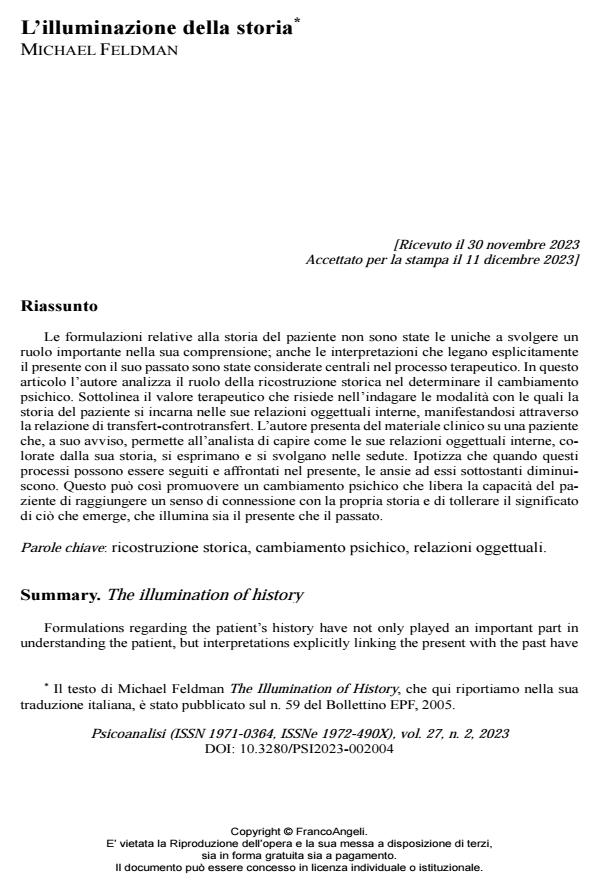The illumination of history
Journal title PSICOANALISI
Author/s Michael Feldman
Publishing Year 2024 Issue 2023/2
Language Italian Pages 11 P. 81-91 File size 176 KB
DOI 10.3280/PSI2023-002004
DOI is like a bar code for intellectual property: to have more infomation
click here
Below, you can see the article first page
If you want to buy this article in PDF format, you can do it, following the instructions to buy download credits

FrancoAngeli is member of Publishers International Linking Association, Inc (PILA), a not-for-profit association which run the CrossRef service enabling links to and from online scholarly content.
Formulations regarding the patient’s history have not only played an important part in understanding the patient, but interpretations explicitly linking the present with the past have been seen as central to the therapeutic process. In this paper the author considers the role of historical reconstruction in bringing about psychic change. He emphasizes the therapeutic value that lies in the exploration of the way the patient’s history is embodied in his internal object relationships, becoming manifested in the transference-countertransference relationship. The author presents clinical material which he suggests allowed the analyst to follow the way the patient’s internal object relations, coloured by her history, became expressed and played out in the sessions. He suggests that, when these processes can be followed and addressed in the present, this may lead to a diminution in the underlying anxieties. This can thus promote psychic change by freeing the patient’s capacity to achieve a sense of connection with her history, and to tolerate the meaning of what emerges, which illuminates both the present and the past.
Keywords: historical reconstruction, psychic change, object relations.
Michael Feldman, L’illuminazione della storia in "PSICOANALISI" 2/2023, pp 81-91, DOI: 10.3280/PSI2023-002004